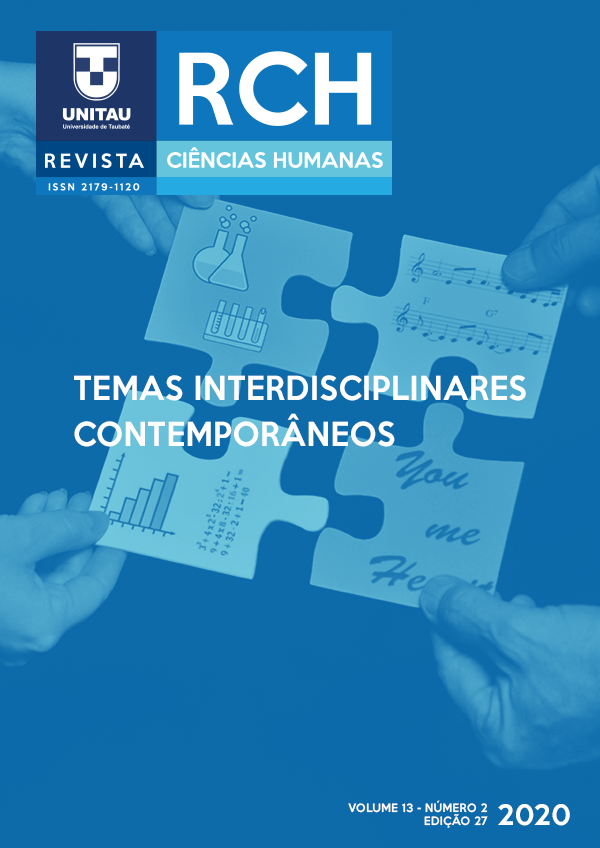INVESTIGATING THE SPATIAL ORGANIZATION TRADITIONAL NEIGHBORHOODS OF HAMEDAN AND ITS IMPACT ON SOCIAL RELATIONS
DOI:
https://doi.org/10.32813/2179-1120.2020.v13.n2.a567Resumo
Hamadan's traditional neighborhoods organize and shape the basic spatial structures of architecture and urbanization of the Qajar era, which have undergone many changes over the course of the city's development plans, and their traditional structure has changed over time due to non-compliance. They are worn out and have lost their functionality, which has reduced the level of communication between the residents. Hamadan neighborhoods in the Qajar period have been identified and evolved in two forms: linear, field, mosque, lawn, bath, caravansera, Imamzadeh, Sardabeh, Cheshmeh, etc. The center of the neighborhood was the heart of the neighborhood. Shops built around it.
Métricas
Referências
Ardalan, Nader, 2005. A comprehensive plan of Boualisina University, Hamedan: Kendis consultant, Quarterly of people culture (special edition of Hamedan), the seventh year, no 26.
Azkaei, Parviz, 1988, Hamedannameh
Azhand, Yaghub, 2001. History of Iran, the Safavid period, the research of Cambridge University, Tehran Jami
Behzadfar, Mostafa, Tahmasebi, Arsalan, 2013. Identifying and evaluating the effective components on the social interaction of strength and development of citizenship relations in urban streets; case study: Sanandaj Study, scientific research journal, Baghnazar, tenth year, no 25
Taghavinejad Deylami, Mohammad Reza (1987). Iran urbanization architecture over time, Farhangsara publications
Chapman, David, 2005. “Creation of neighborhoods and places in the human-made environment, translated by Shahrzad Faryadiand Manouchehr Tabibian, Tehran University Publications
Habibi, Sayed Mosen, 2002. The manner of modeling and reviving neighborhood structure, fine arts journal, no 13, pp 32-39
Habibi, Sayed Mohsen, 2004. From Shar to Shahr (city), Tehran University
Khaksari Ali, 2006. Urban neighborhood in Iran. The research center of humanities and cultural studies, Tehran
Daneshpur, Sayed Abdolhadi; Charkhchian, Maryam. 2007. The public spaces and effective factors on collective life. Research scientific journal of Baghnazar, no 7
Salehinia, Majid; Memarian, Gholamhossein, 2009. The sociability of architectural space. Fine arts, architectural and urbanization journal, no 4
Azizi, Mohammad Mahdi, 2006. Sustainable residential neighborhood: case study: Narmak, fine arts journal, no 27. Pp 35-46
Ghafourian, Mitra; Hesari, Elham, 2014. The role of neighborhood centers in the increase of residents’ social interactions, case study: Kuti neighborhood center, Boushehr. The first conference of pivotal development of civil engineering, architecture, power
Ghanbari, Abdolhamid; Jafari, Marziyeh, 2014. Effective factors on the promotion of social interactions among the residents (case study: Drake neighborhood of Tehran. Journal of Iran Architecture and Urban Planning, no 7, pp 57-64
Kashanijou, Kh, 2010. Recognizing the theoretical approaches to public urban space, City identity journal, fourth year, number 6. Pp 95-106
Gol, Yan, 2010. Public spaces and collective life, Ali Ghafarri and Sadegh Soheilipur, Beheshti University Publications.
Mofidi Shemirani, Sayed Majid; Moztarzadeh, Hamed 2014. Developing the criteria of sustainable urban neighborhood structure. The scientific and research journal of Baghnazar. Period 11, no 29. Pp 59-70
Masoudi, Kumars 2008. Urban public spaces as the place of social interactions, municipalities' journal, third year, 26
Mostafavi, sayed Mohammad Taqi, 1953. Hegmatane, Tehran: Bi ta.
Mehryar, Mohammad, et al, 1999. Iran cities in the Qajar era. Beheshti University, Cultural Heritage
Barton, Hugh, et al (2003), Shaping Neighbourhoods: A guide for health, sustainability and vitality, SponrPess, London and New York.
CC, SarkissianW (1986). Housing as if People Mattered, Berkeley, University of California Press.
Downloads
Publicado
Como Citar
Edição
Seção
Licença
Copyright (c) 2020 Revista Ciências Humanas

Este trabalho está licenciado sob uma licença Creative Commons Attribution 4.0 International License.
As publicações da Revista Ciências Humanas estão registradas sob a licença Creative Commons Attribution CC-BY.
1. Os conteúdos dos trabalhos são de exclusiva responsabilidade de seu autor.
2. É permitida a reprodução total ou parcial dos trabalhos publicados na Revista, desde que citada a fonte.
3. Ao submeterem seus trabalhos à Revista os autores certificam que os mesmos são de autoria própria e inéditos (não publicados em qualquer meio digital ou impresso).
4. Os direitos autorais dos artigos publicados na Revista são do autor, com direitos de primeira publicação reservados para este periódico.
5. Para fins de divulgação, a Revista poderá replicar os trabalhos publicados nesta revista em outros meios de comunicação como, por exemplo, redes sociais (Facebook, Academia.Edu, etc).
6. A Revista é de acesso público, portanto, os autores que submetem trabalhos concordam que os mesmos são de uso gratuito.
7. Constatando qualquer ilegalidade, fraude, ou outra atitude que coloque em dúvida a lisura da publicação, em especial a prática de plágio, o trabalho estará automaticamente rejeitado.
8. Caso o trabalho já tenha sido publicado, será imediatamente retirado da base da revista, sendo proibida sua posterior citação vinculada a ela e, no número seguinte em que ocorreu a publicação, será comunicado o cancelamento da referida publicação. Em caso de deflagração do procedimento para a retratação do trabalho, os autores serão previamente informados, sendo-lhe garantido o direito à ampla defesa.
9. Os dados pessoais fornecidos pelos autores serão utilizados exclusivamente para os serviços prestados por essa publicação, não sendo disponibilizados para outras finalidades ou a terceiros.





